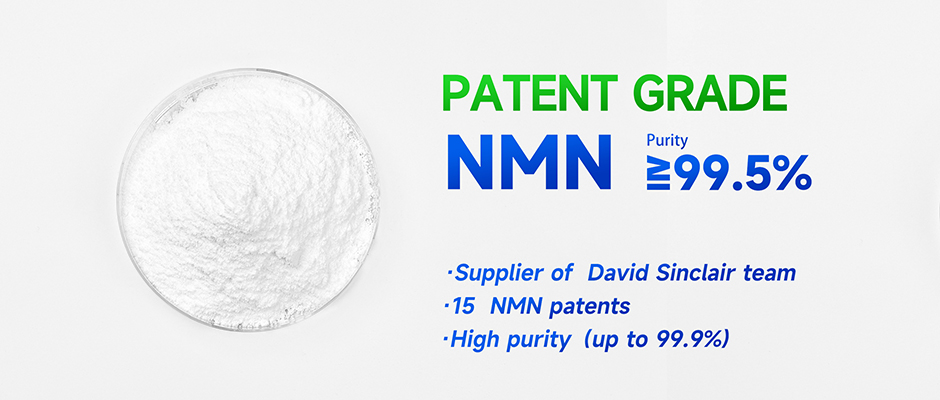
01 Jan
An Integrated Map of Molecular Mechanisms Underlying the Effect of NMN in T2DM

Introduction
Diabetes is one of the dominant causes of death and disability worldwide, greatly affecting the life quality of patients. According to the latest data on diabetes released by the Lancet (GBD Study 2021), type 2 diabetes mellitus (T2DM) cases almost makes up 96.0% of all diabetes cases, with the hallmark of impaired glucose uptake. There are approximately 529 million patients with diabetes in 2021, with age-standardized prevalence of 6.1%. Remarkably, β-nicotinamide mononucleotide (NMN) is able to ameliorate T2DM via unexpected effects on adipose tissue rather than mitochondrial biogenesis.

Global age-standardised prevalence of type 1 and type 2 diabetes from 1990 through 2050 forecasts

Global age-standardised prevalence of type 1 and type 2 diabetes from 1990 through 2050 forecasts
Risk factors for T2DM
High body mass index (BMI) is the main risk factor for T2DM, followed by dietary risk factors, environmental or occupational factors, smoking, insufficient physical activity, alcohol consumption, etc.
The organ-specific effects of NMN treatment in T2DM
NMN alleviates the mildly impaired and energy-inefficient protein synthesis in mice with T2DM induced by high-fat food. Specifically, NMN downregulates spliceosome proteins while upregulating ribosome proteins in hepatocytes. Besides, NMN downregulates proteasome and upregulates DNA replication and cell cycle pathways in muscle cells.

Integrated proteomics data analysis of NMN-treated HFD mouse liver.

Integrated proteomics data analysis of mouse muscle tissue.
Adipose tissue, an energy reservoir, has been attested to be implicated with glucose metabolism. NMN boosts glucose uptake via Resistin downregulation, increased protein synthesis/degradation, fatty acid degradation, lysosome protein upregulation (most notably upregulation of the ATP6V1 proton pump), mTOR cell proliferation signaling in white adipose tissue, differentiation of preadipocytes to brown adipose cells and/or overexpression of thermogenic UCP1, a protein of the inner mitochondrial membrane of brown adipose tissue.

Integrated proteomics data analysis of NMN-treated HFD mouse adipose tissue

Integrated proteomics data analysis of NMN-treated HFD mouse liver.

Integrated proteomics data analysis of mouse muscle tissue.
Adipose tissue, an energy reservoir, has been attested to be implicated with glucose metabolism. NMN boosts glucose uptake via Resistin downregulation, increased protein synthesis/degradation, fatty acid degradation, lysosome protein upregulation (most notably upregulation of the ATP6V1 proton pump), mTOR cell proliferation signaling in white adipose tissue, differentiation of preadipocytes to brown adipose cells and/or overexpression of thermogenic UCP1, a protein of the inner mitochondrial membrane of brown adipose tissue.

Integrated proteomics data analysis of NMN-treated HFD mouse adipose tissue
Conclusion
NMN exerts organ-specific effects, with a vital role in improving glucose uptake, showing potent potential in the management of metabolic disorders including T2DM.
Reference
[1] GBD 2021 Diabetes Collaborators. Global, regional, and national burden of diabetes from 1990 to 2021, with projections of prevalence to 2050: a systematic analysis for the Global Burden of Disease Study 2021. Lancet. 2023;402(10397):203-234. doi:10.1016/S0140-6736(23)01301-6
[2] Popescu RG, Dinischiotu A, Soare T, Vlase E, Marinescu GC. Nicotinamide Mononucleotide (NMN) Works in Type 2 Diabetes through Unexpected Effects in Adipose Tissue, Not by Mitochondrial Biogenesis. Int J Mol Sci. 2024;25(5):2594. Published 2024 Feb 23. doi:10.3390/ijms25052594
[2] Popescu RG, Dinischiotu A, Soare T, Vlase E, Marinescu GC. Nicotinamide Mononucleotide (NMN) Works in Type 2 Diabetes through Unexpected Effects in Adipose Tissue, Not by Mitochondrial Biogenesis. Int J Mol Sci. 2024;25(5):2594. Published 2024 Feb 23. doi:10.3390/ijms25052594
BONTAC NMN
BONTAC is the pioneer of NMN industry and the first manufacturer to launch NMN mass production, with the first whole-enzyme catalysis technology around the world. At present, BONTAC has become the leading enterprise in niche areas of coenzyme products. Notably, BONTAC is the NMN raw material supplier of famous David Sinclair team at the Harvard University, who uses the raw materials of BONTAC in a paper titled “Impairment of an Endothelial NAD+-H2S Signaling Network Is a Reversible Cause of Vascular Aging”. Our services and products have been highly recognized by global partners. Furthermore, BONTAC has the first national and the only provincial independent coenzyme engineering technology research center in Guangdong, China. The coenzyme products of BOMNTAC are widely used in fields such as nutritional health, biomedicine, medical beauty, daily chemicals and green agriculture.


Disclaimer
This article is based on the reference in the academic journal. The relevant information is provided for sharing and learning purposes only, and does not represent any medical advice purposes. If there is any infringement, please contact the author for deletion. The views expressed in this article do not represent the position of BONTAC.
Under no circumstances will BONTAC be held responsible or liable in any way for any claims, damages, losses, expenses, costs or liabilities whatsoever (including, without limitation, any direct or indirect damages for loss of profits, business interruption or loss of information) resulting or arising directly or indirectly from your reliance on the information and material on this website.
Under no circumstances will BONTAC be held responsible or liable in any way for any claims, damages, losses, expenses, costs or liabilities whatsoever (including, without limitation, any direct or indirect damages for loss of profits, business interruption or loss of information) resulting or arising directly or indirectly from your reliance on the information and material on this website.
